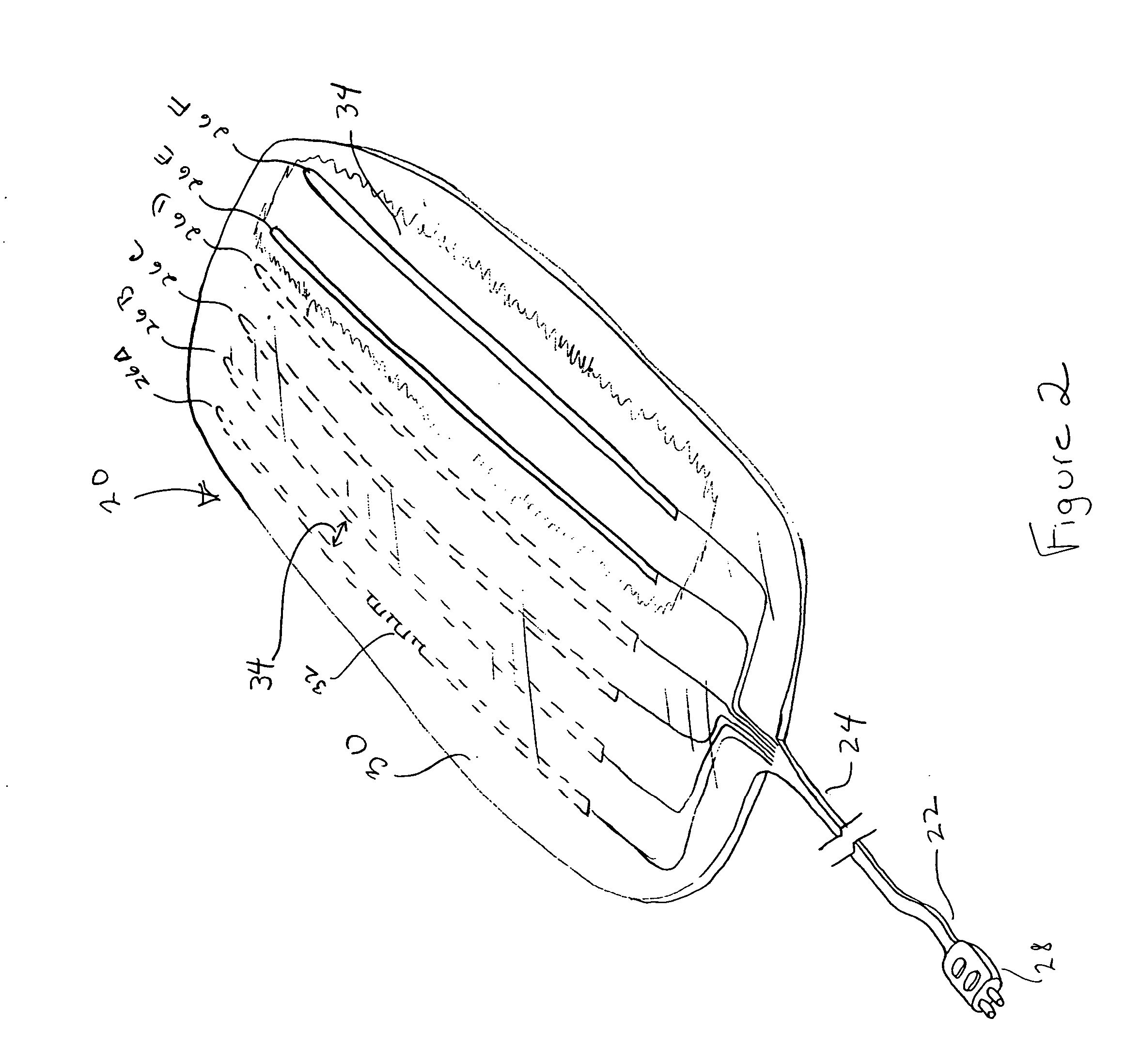Subcutaneous lead system for detection and treatment of malignant ventricular arrhythmia
a lead system and ventricular arrhythmia technology, applied in the field of subcutaneous lead system, can solve the problems of not all patients present for the placement of leads within the cardiac chamber, the possibility of perforation and collapse of the lung, and the relative time-consuming, and achieve the effect of good protection against life-threatening tachyarrhythmias
- Summary
- Abstract
- Description
- Claims
- Application Information
AI Technical Summary
Benefits of technology
Problems solved by technology
Method used
Image
Examples
Embodiment Construction
[0014] The present invention provides a system and method for the long-term monitoring of arrhythmias utilizing a lead or leads including a plurality of energy delivery and sensing electrodes. The invention also provides acute therapy delivery in the event an arrhythmia episode is detected. According to one embodiment of the invention, an implantable pulse generator is also provided. The pulse generator is coupled to at least one subcutaneously-placed lead system in accordance with the present invention. Cardioversion / defibrillation pulses and / or pacing pulses may be delivered between the lead system and the pulse generator / defibrillator, or between two subcutaneously-placed lead systems.
[0015] Referring to FIG. 1, an implantable pulse generator 10 and an exemplary lead system 16 in accordance with the present invention is illustrated. Pulse generator 10 includes a device housing 12, and is further coupled to a lead 14 which may be implanted subcutaneously in the left chest or on t...
PUM
 Login to View More
Login to View More Abstract
Description
Claims
Application Information
 Login to View More
Login to View More - R&D
- Intellectual Property
- Life Sciences
- Materials
- Tech Scout
- Unparalleled Data Quality
- Higher Quality Content
- 60% Fewer Hallucinations
Browse by: Latest US Patents, China's latest patents, Technical Efficacy Thesaurus, Application Domain, Technology Topic, Popular Technical Reports.
© 2025 PatSnap. All rights reserved.Legal|Privacy policy|Modern Slavery Act Transparency Statement|Sitemap|About US| Contact US: help@patsnap.com



